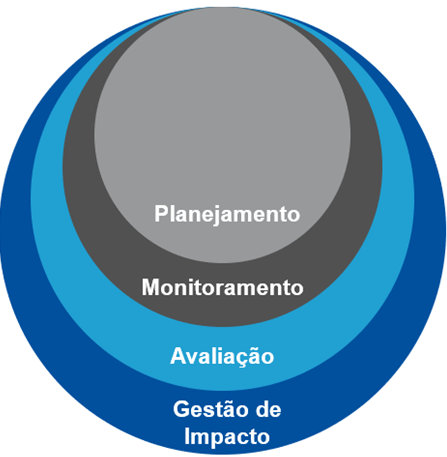
By Larissa Landete and Eduardo Toshio
Professor and statistician William Edwards Deming said: “You don't manage what you don't measure, you don't measure what you don't define, you don't define what you don't understand, and there is no success in what you don't manage”. Bringing this reflection to the context of social impact projects, the intention to generate impact with the project is not enough, it is necessary to measure and find out whether the planned impact was achieved or not. And that is what we would like to talk about in this article and we will name the topic as: Impact Management.
Every organization carries out its financial management, whether periodically controlling income and expenses, or creating and monitoring future scenarios. This is all part of a culture of checking the financial health of the business or initiative. However, we observed that, when it comes to looking at the impact generated on people and/or the environment, it is not yet widespread in the vast majority of organizations.
To talk about Impact Management, let's imagine overlapping circles, as shown in figure 01.

In the Planning stage, the desired results and impact are defined through the social project in question, as well as indicators and goals that help guide, in practice, what is sought to be achieved. There are tools that support this construction. A widely used one is the Theory of Change, which argues that, once you have defined what you hope to do and generate positive change, you need to move forward with the investigation itself, a stage called Monitoring.
In order to monitor it, we need to collect indicator data from the beneficiaries of the social project, ideally before and after the project intervention. There are specific methodologies for the data collection stage, which cannot be explained in depth here, but for those interested, we recommend this public IDIS material.
It turns out that, just looking at the numbers, many other important issues surrounding the project may go unnoticed. This is where the need for Evaluation comes in, a step whose purpose is to interpret the results of the indicators and generate insights to understand whether the project is providing the expected social progress (or not). Likewise, understand the challenges and limitations encountered in order to, if necessary, make adjustments to your route.
Planning, Monitoring and Evaluating are fundamental parts for the existence of Impact Management, which can be understood as a more mature practice in a journey of social impact, because, when reaching such a place, we are talking about the internalization of a culture of impact. Here the organization can use the results in decision-making, communication with its different stakeholders and in defining which themes and social projects generate the most impact and proximity to externalities and business.
Impact Management requires planning, monitoring and evaluation as essential elements. It is a mature practice in the journey of social impact, representing the internalization of a culture of impact.
It is important to note that this journey is not a linear process, starting from Planning and going directly to Impact Management. On the contrary, it is a feedback process, in which discoveries in one stage serve to make revisions in previous stages and, thus, maintain a learning cycle.
Therefore, by understanding and evaluating the impact of social projects, it is possible to gather strategic information to guide and support the sustainable journey of organizations that manage such projects, allowing, based on the data, reflection on how they are generating value for society.
If you are more interested in the topic, in this other article from Eco+, about a Social Impact Assessment case.
Share